Unfortunately, this deal has expired 19 November 2022.
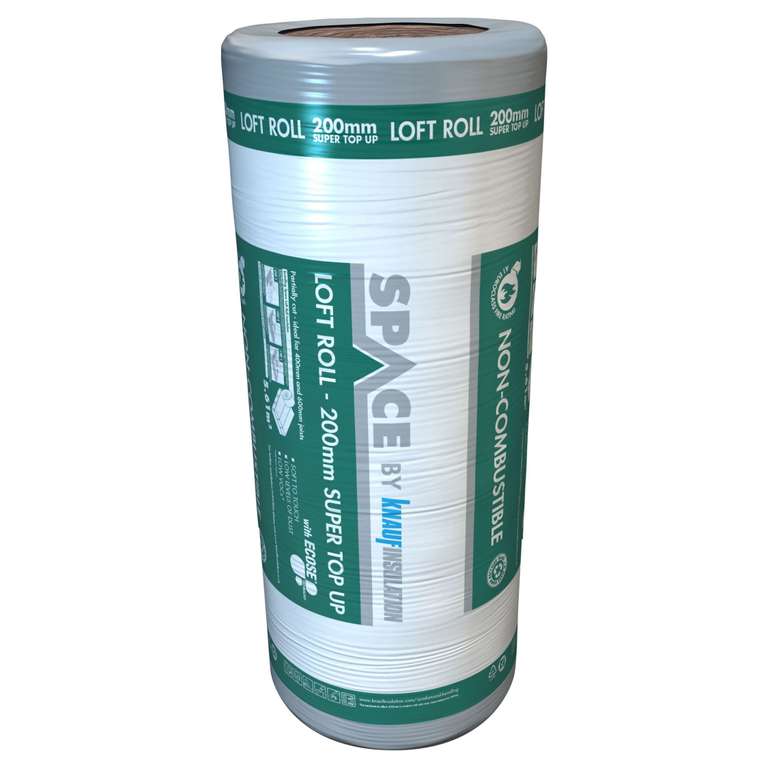
*
568°
Posted 6 November 2022
Knauf Insulation Super Top Up 200mm Loft Roll - 5.61m² for £25 (Free Collection) @ Wickes
Shared by
Lefty
Joined in 2007
20
934
About this deal
This deal is expired. Here are some options that might interest you:
I’ve been topping up my loft insulation, to great effect (should have done it earlier)! Annoyingly, whilst buying the last couple of rolls from my local wickes, I spotted the price has been reduced by &5 a roll. Get it whilst you can!
Length: 4925 mm
Thickness: 200 mm
Width: 1140 mm
Material: Glass Mineral Wool
Usage: Pitched roof - ceiling level
Coverage: 5.61m²
Fire Retardant: Euroclass A1
Thermal Conductivity: 0.044 W/mK
Thermal Resistance R Value: 4.50 m2K/W
Pack Quantity: 1
Certifications Met: BS EN 13162
Type: Loft roll insulation
Brand Name: Knauf Insulation
Features & benefits
This product will help to lower the energy use in your home, and supports sustainable living through better use of resources
Combi-cut products are supplied partially perforated, providing the flexibility to be used between joists or used uncut as a full-width roll, maximising on-site efficiency
Made with ECOSE Technology: Soft to touch, easy to handle, low levels of dust, low VOCs and environmentally friendly
Non-combustible Euroclass A1 Reaction to Fire classification
Eurofins Gold Indoor Air Comfort Certified Product
Significantly improves the thermal and energy efficiency in your home, helping keep your home warm in the winter & cool in the summer
Low VOCs (Volatile Organic Compound) to help improve indoor air quality
Glass Mineral Wool products are made with up to 80% recycled glass
Compression packed and lightweight for easy handling and moving around a site
Length: 4925 mm
Thickness: 200 mm
Width: 1140 mm
Material: Glass Mineral Wool
Usage: Pitched roof - ceiling level
Coverage: 5.61m²
Fire Retardant: Euroclass A1
Thermal Conductivity: 0.044 W/mK
Thermal Resistance R Value: 4.50 m2K/W
Pack Quantity: 1
Certifications Met: BS EN 13162
Type: Loft roll insulation
Brand Name: Knauf Insulation
Features & benefits
This product will help to lower the energy use in your home, and supports sustainable living through better use of resources
Combi-cut products are supplied partially perforated, providing the flexibility to be used between joists or used uncut as a full-width roll, maximising on-site efficiency
Made with ECOSE Technology: Soft to touch, easy to handle, low levels of dust, low VOCs and environmentally friendly
Non-combustible Euroclass A1 Reaction to Fire classification
Eurofins Gold Indoor Air Comfort Certified Product
Significantly improves the thermal and energy efficiency in your home, helping keep your home warm in the winter & cool in the summer
Low VOCs (Volatile Organic Compound) to help improve indoor air quality
Glass Mineral Wool products are made with up to 80% recycled glass
Compression packed and lightweight for easy handling and moving around a site
Community Updates
Edited by a community support team member, 6 November 2022



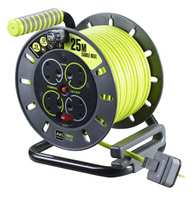
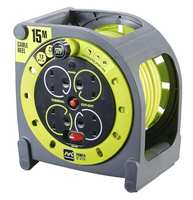

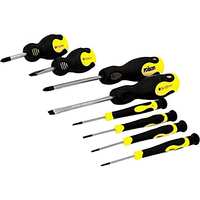

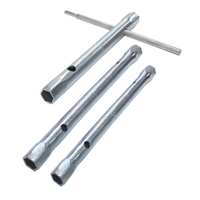
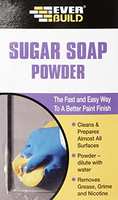


148 Comments
sorted byHow much difference that extra 70/100 makes however Vs cost (double) is negligible though so if you just did this 200 only straight between the joists, I'm sure it'd be fine. (However if you sell your house the EPC will show less than 270mn that way and you'll get a slightly lower score of that's a concern)
Personally I'd leave the old stuff, and do this at 90 degrees over the top, as removing the old is a horrible filthy job, and you won't see it once this is over top.
Fyi. Loads of brand new rolls come up 2nd hand on FB marketplace, gumtree etc. I've now got too many, but have averaged under £10 a roll.
Two problems though.
- Finding someone interested in doing the job. I've asked several places now & a lot just don't bother to even give you a quote. I assume they're all mega busy with other work.
- Getting a reasonable quote. The only firm quote we've got so far was for £1,780! This is for a small mid terrace with a 40 m² relatively uncluttered roof space. Last year we used 6,375 kWh of gas (all for hot water & heating) with 60% of that being used in the four coldest months of the year. That works out at £382/winter. It may be the un-green thing to do but when tradesmen want £1,780 to insulate your roof, you're better off just burning the gas in the first place!
I did one roll, a few months back and can't say I enjoyed the experience one bit! Mind you there's a maximum head height of around 3 feet in the attic (old cottage with coombe ceilings)
There's two other areas of the attic space (opposite ends of the house) that needs updating, to thicker insulation.
I got the other half to make an enquiry about getting something sorted out via E.On but no idea if she's heard anything back?
I was always under the impression that is shouldn't be covered up but when it is tacked to the side of joists it will be hidden under the insulation and probably loft boards.
Anyone got some advice of how to lay it around lighting. There’s down lights in the bathroom and didn’t want to cause any fire hazards. Cheers
diy.com/dep…prd
I was tempted to use lap vents instead, but the eaves insualtion needed pulling out anyway as it was wet.
I'm not sure if you're asking about insulating the walls of the house itself though. That is indeed absolutely possible but how you do this depends a lot on what type of wall you have. If you have a cavity that's the easiest thing to sort out and will make a big difference. This time, though, you will notice that the warm moist air inside the house finds it harder to leave and you may end up using a dehumidifier or similar. Modern houses are built with a whole house system to take away this warm moist air and replace it with fresh air but without losing the heat (an MVHR system).
You mentioned breathability. This seems to me a really complex concept and I only think I understand it partially, but I believe refers significantly to the ability of a material to deal with moisture transmission. It does matter particularly in old houses made with lime mortar that are inherently breathable. If you use a non brretahble insulation you can trap moisture behind it which causes lots of problems. We are using Wood Fibre insulation boards in our old solid wall house to achieve this.
Sorry if I've misunderstood anything about your question.
i am replacing 1800 by 2400 chipboard (3 sheets at 600 wide with 2 boards (1200 mm wide) and putting 100mm Celotex on top with another 2 boards on top to walk on as I have put shelves in the eaves
109mm Celotex has the same thermals as 200mm of fibre insulation
What do you do if you have a large cold water tank set on ply on the loft joists, and many pipes running to it and the F+E tank? If you want to use stilts to get up to 270mm insulation, do you just build the new level of chipboard floor around the tank (leaving pipes and half the tank non-visible)? Also have the inline fans and ducting above the bathrooms fixed to the loft floor with mains electricity running to them, which presumably can't be covered.
Definitely needs to be done, as only have a few cm of very old fibreglass insulation that looks like it was sprayed between the joists (but loose, not the solid, modern sprayed stuff on loft ceilings).
Cheers for any advice!
Edit I'm also assuming you have an insulated jacket tied around the tanks (edited)
There are means to reduce this, by using scaffold board etc. but still doesn’t eliminate the possibility.
If the installer ensured it was repaired and the mistake was rectified, then they dealt with it professionally. (edited)
I could be completely wide of the mark now though. (edited)
But home owners need to take responsibility too. Even at full price and with low gas prices, loft insulation was a worthwhile investment. But 1/3 of home owners didn't bother to insulate while gas was cheap, and now many complain that their gas bills are too high. Hopefully more posts like this on HUKD will encourage people to install it.
As others have said, small batches (a roll or three) are often cheaper on Facebook marketplace. Just check it's dry.
Investing in a smart thermostat will provide big savings straight away so worth adding to the mix.
My logic here was that it was better to part do the job for most impact as it was just too big a job to DIY in a weekend on your own.
Also, on the note of depth I worked on a diminishing returns basis like this graph.
Depending on the depth of your joists, it is common to run 200mm insulation in between the joists and then top up with 100mm rolled perpendicular on top. This also stops cold bridging from the joists themselves.
At the end of the day, more insulation = better, and there isn't really a wrong way. You can have 100mm + 100mm + 100mm, or a 200mm roll + 100mm roll etc.